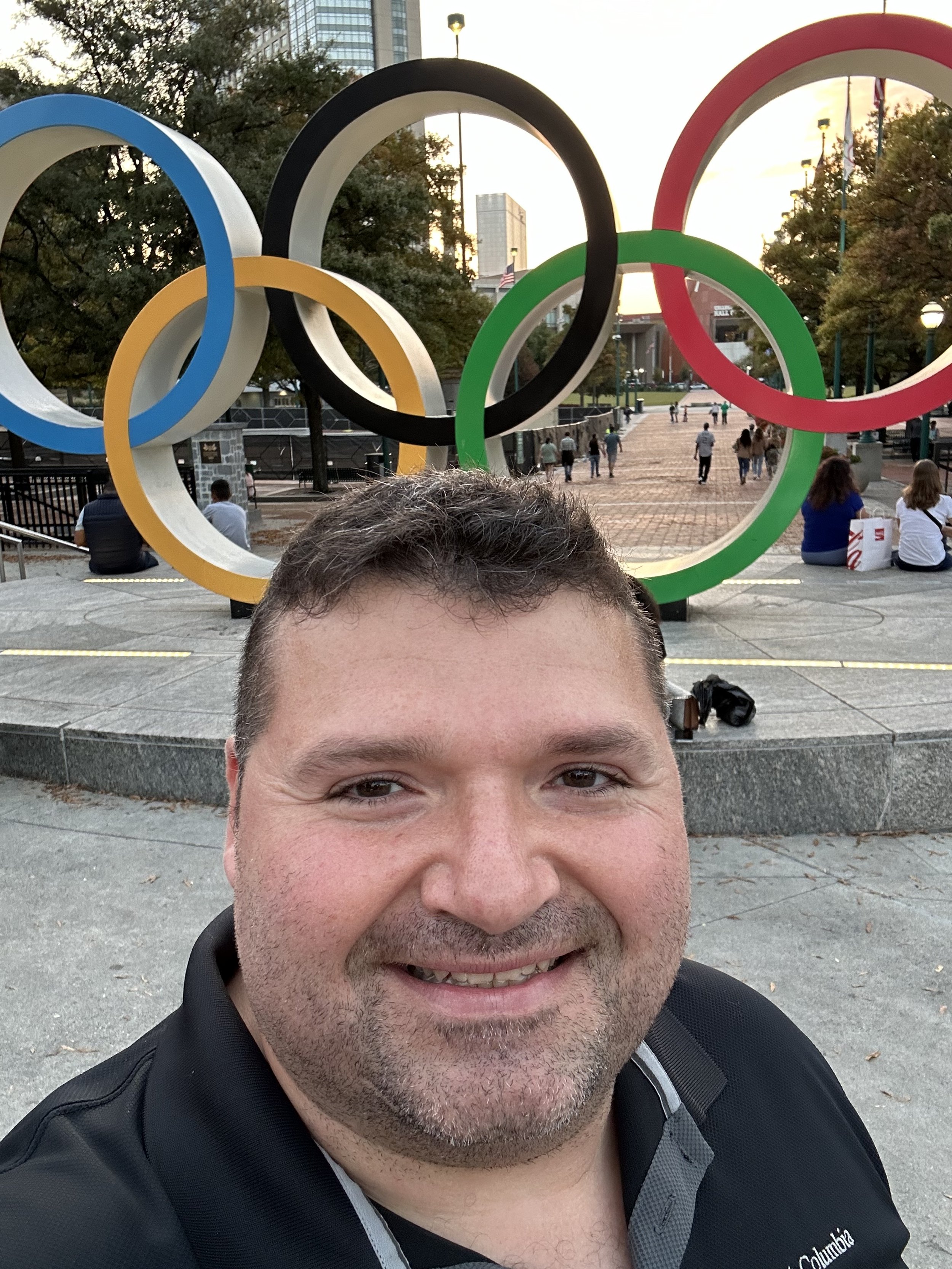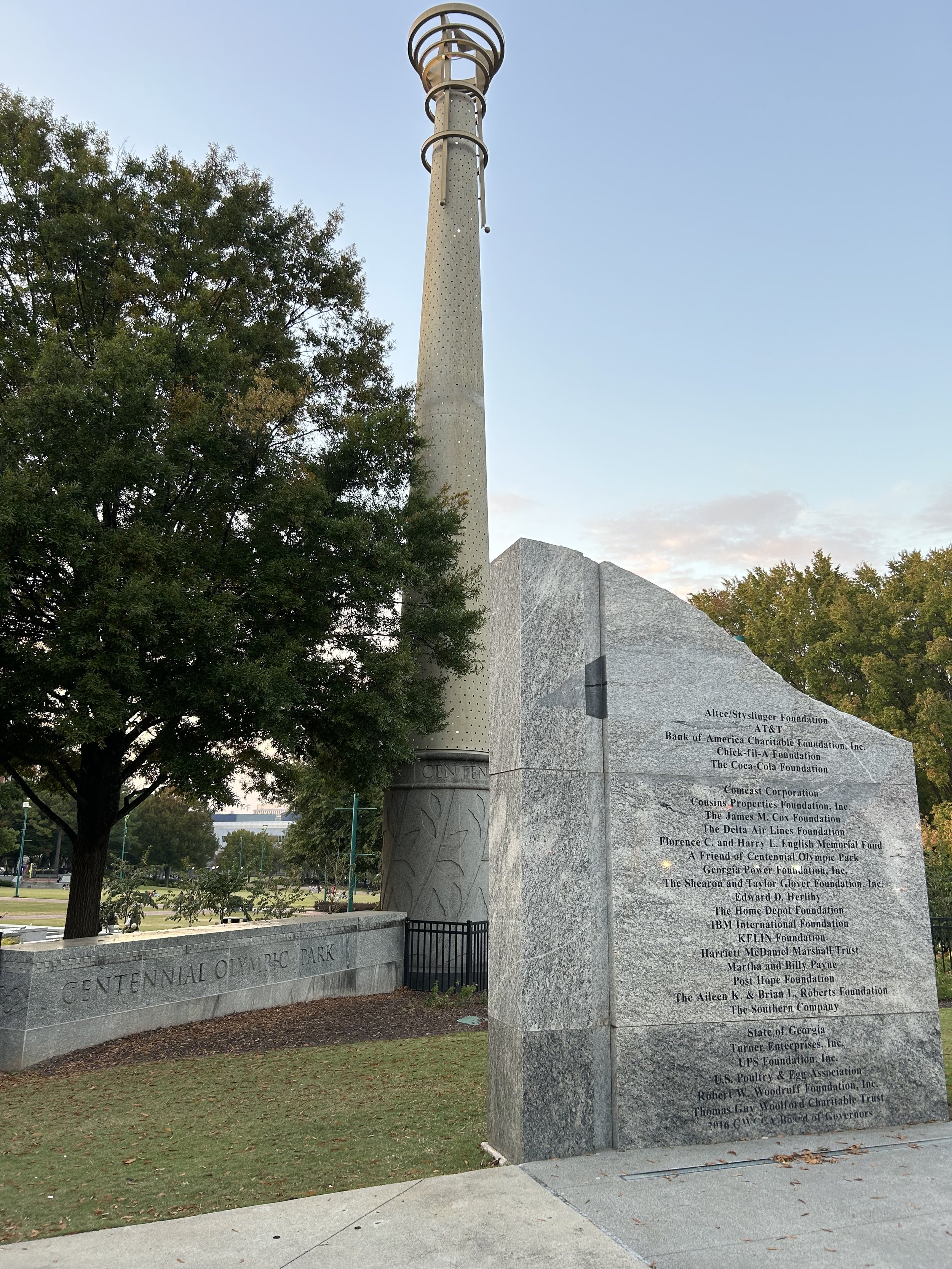This past weekend, I was honored to present the "Sustainability Game" to a large group of enthusiastic teachers at the 2024 IMC Conference in Atlanta, Georgia. The conference was held at the Grand Courtland, which was right in the heart of downtown Atlanta. It made walking easy, which is good because the traffic was terrible. My original plan was to get there early Friday morning, attend the keynote, and catch up with fellow Montessorians. My early morning flight was at 5:30 AM, so I got to the airport around 3:30 AM to ensure I had plenty of time for security. Unfortunately, fate had a different plan for me. After getting through security, I was waiting at my gate when I saw an email saying that my flight had been canceled! The next available flight from Frontier would get me to Atlanta at 2 AM on Saturday. This was not a great option when I was supposed to present that very morning!
After seeking a refund for the missed flight, I purchased a different (and more expensive) flight from Delta to get me to Atlanta at a more reasonable hour. After arriving in Atlanta around 7 PM and checking in at the Courtland, I quickly reunited with Robin Howe, a good friend with whom I did my AMS Montessori E1 and E2 credentials. We had dinner with a large group of friends and made several toasts to our late mentor, Michael Dorer. Along the way, we had to make a FaceTime call to the third musketeer, Jody Maltierre, who was also in our E1 and E2 cohorts.
The next morning, I found my presentation spot and immediately moved all the tables and chairs to the wall to make space for the Sustainability Game. After getting the room prepped, I started the day with an excellent presentation from Saturday’s keynote speaker, Sam Chaltain, about the future of AI and education. While there are perilous roads ahead, his keynote left me feeling hopeful. After his talk, it was time to set the game up, get mic'ed up, and wait for attendees to arrive. There was a thirty-minute break between the keynote and the first set of presentations, so I had time to review talking points for the game.
People started rolling slowly but surely, and after a short introduction of myself, it was time to start the game. We had twenty people, which was a perfect number to have five teams of four. I went through the basic instructions, answered a few questions, and it was time to play! I was thrilled that my group was energetic and enthusiastic, playing the game with some gusto. However, that same energy may have contributed to a sense of competitiveness that actually sabotages the game. Predictably, the group failed the first game because they took all the tennis balls without replenishing the environment. After failing two more times, they began altering their strategy. The game's goal is to get as many tennis balls as possible, but this objective is purposely worded to create the idea that this game is a competitive team-based game. The mindset is us versus them. That is how the first three games were played, with teams mostly only thinking of their own count and only donating tennis balls when the game ground to a halt. However, as the group started to witness the inequity that their approach was creating, they offered alternative solutions for how to play the game that didn't focus as much on individual team score but focused more on coordinating taking and donating to keep the game going and make the number of tennis balls per team more equitable.
After trying this new approach, they had their first successful game! It was almost derailed, though, as the group that suggested the more equitable approach had far more tennis balls than the others. Was this done on purpose? We may never know. However, after that point was pointed out by the other groups, the whole group chalked it up as an accounting error, and they would be more successful moving forward. They suggested that everyone use a repeating pattern of how to play the game like take, take, donate, take, take, donate. While this approach yielded another successful game, it was not equitable because they had not considered the difference in distance of the teams. The closer teams ended with more tennis balls because the distance traveled was shorter than those further away. Even though the closer teams used the agreed-upon pattern, their shorter distance meant, in reality, they had more turns. Therefore, they had more tennis balls at the end of the game. They used a coordinated pattern for the last game but constantly communicated to check that each group had the same number. The teams that were also closer to the tennis balls slowed down to allow the other teams the same number of turns. This strategy yielded their best result by far! Not only did the teams achieve equitable success, but they also managed to not completely decimate the environment in the process of collecting resources. My attendees have the honor of being the first group to accomplish this feat successfully! I've had groups of students develop the same strategy, but it ultimately fails when one or more students don't adhere to it, sabotaging the collective effort.
After playing for over an hour, we had some excellent discussions on the game's symbolism, how to alter the messaging for younger children to make the game about fairness, and the evolution of their understanding of the game and how it influenced strategy. Once the attendees stopped thinking about their individual team's success but reframed it as the most tennis balls collected by the whole group, they found that they had more than enough for themselves. The environment was also spared massive devastation before replenishment became a priority. The initiative they put in place to ensure fairness simultaneously unlocked a new achievement with environmental protection. The whole presentation was recorded and will be put up on the IMC website. When it does, I will certainly add a link to the presentation video so you can see the “Sustainability Game” in action. In the meantime, check out the individual lessons section to download six free lessons, which include the Sustainability Game!
After the successful presentation, it was time for lunch and then a nap. My “students” worked hard, but so did I! Without realizing it until later, I had performed probably hundreds of mini squats facilitating the game. I didn’t know why my legs were so sore until putting two and two together. After the nap, I visited the vendor's area to learn more about grad school and connect with other Montessorians. After talking to the fine people at the UW River Falls booth and one of their grad students currently enrolled, I am seriously considering pursuing a doctorate soon. However, athletics and my athletic director position have become all-encompassing, so I currently don't have enough bandwidth for that. I also got to do a fun interview with Joe Campbell from Montessori Services! He was circulating the conference with a tripod and microphone, and we talked about my first time presenting at an IMC conference. Thank you for the interview, Joe!
After all that, it was time to explore Atlanta a little, so I walked through the Olympic Park and saw a Ferris wheel right in the middle of the city. Being from Chicago, I’m used to having our Ferris Wheels out in the water on a (Navy) pier, so having one right next to tall buildings was interesting. Besides the congested traffic, I would return to Atlanta for vacation. It is a very cool city with its own culture, which I appreciate.









